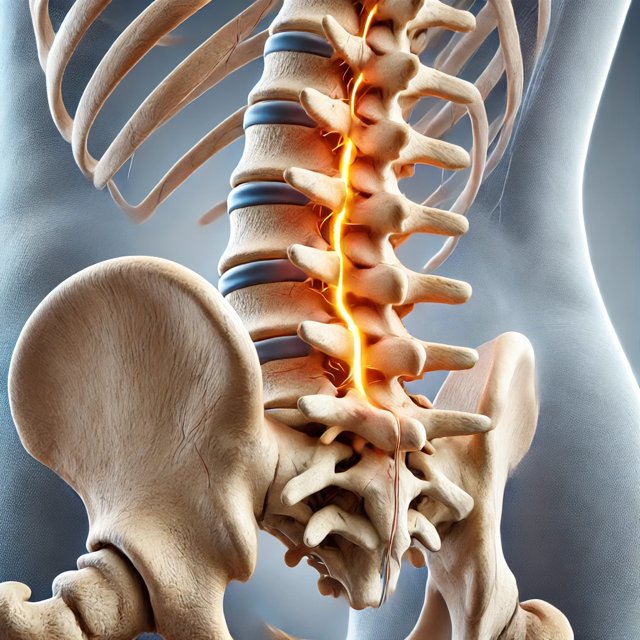Lumbar Canal Stenosis: Symptoms, Causes and Treatment Methods
Lumbar spinal stenosis is a condition that occurs when the spinal canal in the lower back narrows, putting pressure on the spinal cord and nerve roots. It is most commonly seen in older adults but can also develop due to congenital structural abnormalities or trauma.
In this article, we will provide detailed information about lumbar spinal stenosis, covering its symptoms, causes, diagnostic methods, and modern treatment options. Following the recommendations of orthopedic experts like Assoc. Prof. Dr. Serhat Mutlu and Assoc. Prof. Dr. Harun Mutlu, we will evaluate the most appropriate treatment approaches for patients.
What Is Lumbar Spinal Stenosis?
Lumbar spinal stenosis is a condition in which the spinal canal in the lumbar region narrows for various reasons, leading to compression of the nerves. This can result in symptoms such as pain, numbness, and weakness in the lower back and legs.
Although it is most common in individuals over 50 years old, it can also occur in younger patients. In advanced stages, it may cause difficulty walking and limited mobility.
What Are the Symptoms of Lumbar Spinal Stenosis?
The symptoms vary depending on the level of canal narrowing and the degree of nerve compression. The most frequently encountered symptoms include:
✅ Back and leg pain: Typically worsens with walking or standing and improves with rest.
✅ Numbness and tingling in the legs: Usually felt after prolonged standing due to nerve compression.
✅ Muscle weakness: A sensation of leg weakness, especially after walking long distances.
✅ Loss of balance: Nerve conduction disturbances can lead to balance issues.
✅ In advanced stages, bladder and bowel control problems: Rare but may occur with severe nerve damage.
Important Note: If you experience severe numbness, muscle weakness, or bladder/bowel control loss, you should urgently consult an orthopedic specialist.
What Causes Lumbar Spinal Stenosis?
Lumbar spinal stenosis can arise from various factors, the most common of which are:
✔ Age-related degeneration: Spinal discs wear down over time and can contribute to canal narrowing.
✔ Osteoarthritis: Bone spurs form in the spinal canal and compress the nerves.
✔ Herniated disc: Protruding disc material can narrow the canal and press on nerve roots.
✔ Spinal trauma: Accidents, falls, or impacts can alter spinal anatomy and lead to narrowing.
✔ Congenital factors: Some people are born with a naturally narrow spinal canal.
✔ Spinal tumors: Growths in or around the spine can narrow the canal and compress nerves.
How Is Lumbar Spinal Stenosis Diagnosed?
A definitive diagnosis requires a detailed examination and imaging studies by specialists like Assoc. Prof. Dr. Serhat Mutlu and Assoc. Prof. Dr. Harun Mutlu.
Diagnostic Methods:
- Physical examination: Assessment of symptoms, reflexes, and muscle strength.
- X-ray: Detects degenerative changes and bone spurs in the spine.
- Magnetic Resonance Imaging (MRI): Provides detailed images of nerve compression and spinal structures.
- Computed Tomography (CT): Used for a detailed assessment of bony anatomy.
- Electromyography (EMG): Measures nerve conduction velocity to determine the level of nerve damage.
Treatment Options for Lumbar Spinal Stenosis
1. Conservative (Non-Surgical) Treatments
Most cases can be managed without surgery.
- Medication: Pain relievers, muscle relaxants, and anti-inflammatory drugs to alleviate symptoms.
- Physical therapy and exercises: Customized programs to strengthen core and back muscles.
- Epidural steroid injections: Corticosteroid injections around affected nerves to reduce pain and inflammation.
- Manual therapy and chiropractic techniques: Specialized methods to improve spinal alignment.
2. Interventional Treatments
For patients unresponsive to conservative measures:
✔ Radiofrequency ablation: Uses high-frequency waves to reduce pain transmission in nerves.
✔ Minimally invasive procedures: Nerve blocks and targeted injection techniques in the lumbar region.
3. Surgical Treatment
If symptoms progress and conservative treatments fail, surgical options include:
- Laminectomy: Removal of excess bone to enlarge the spinal canal.
- Microdecompression: Minimally invasive relief of nerve pressure.
- Spinal fusion: Stabilizing vertebrae with plates and screws.
Recovery varies based on the patient's age and overall health.
How to Prevent Lumbar Spinal Stenosis
✔ Maintain good posture.
✔ Increase physical activity and strengthen core muscles.
✔ Avoid excessive weight gain.
✔ Use proper lifting techniques.
✔ Keep up with regular medical check-ups.
Conclusion
Lumbar spinal stenosis is a progressive condition that can be effectively treated with early diagnosis. By following the guidance of experts like Assoc. Prof. Dr. Serhat Mutlu and Assoc. Prof. Dr. Harun Mutlu, patients' quality of life can be significantly improved.
If you experience back pain, numbness, or difficulty walking, consult a specialist promptly. A healthy spine is the foundation of a healthy life!

